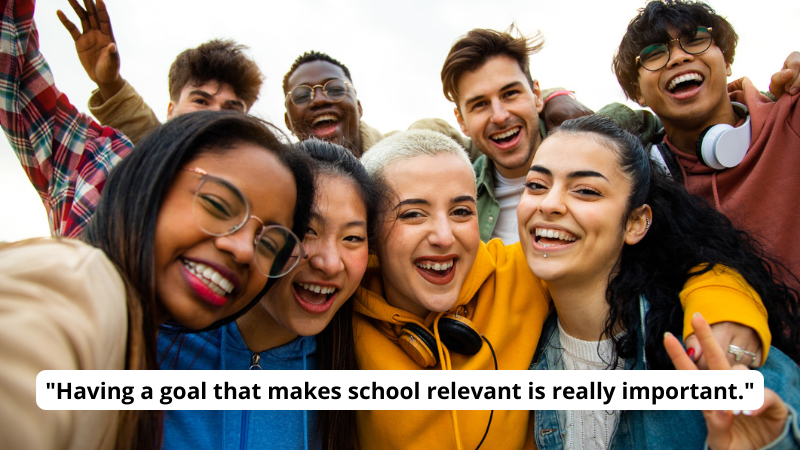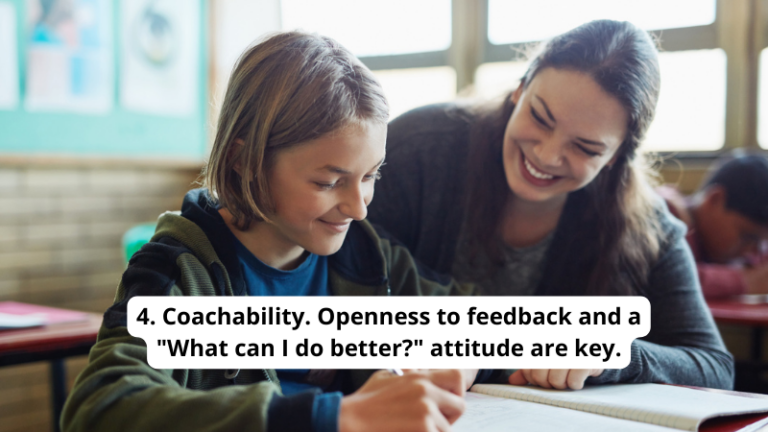High school is an oh-so critical developmental stage in a student’s life. Educators know that these four years are infused with opportunities and experiences that help shape a teenager’s future and sense of purpose beyond school. Skills like time management, collaboration, critical thinking, and financial literacy emerge here—all of which are fundamental for a functional adult life.
With stakes like these, success is no small feat. In an effort to spark conversation here, we gathered insight from nearly 200 high school teachers regarding the trends that they see in their most successful students.
1. Intrinsic motivation
Teachers mentioned this trait most frequently—and for good reason. Teens with intrinsic motivation are the ones who seek out knowledge for the sake of it—they ask questions and take initiative because they genuinely want to learn and grow. Students who engage in their studies learn to take ownership of their learning and are therefore likely to pursue interests and goals that are personally meaningful to them. Intrinsic motivation is not only indicative of academic success but of overall happiness and well-being.
2. Grit
Educators were quick to name grit as an indicative quality seen in their successful high schoolers. Jennifer T. exclaimed, “Grit!!! Kudos to the students who are willing to ask what they can do better to earn a grade they feel reflects the work and effort it took to get there!” Tenacious teens develop a strong sense of perseverance, which can help them navigate stressful and frustrating moments with grace. While this skill bodes well for students within an academic setting, it’s even more essential in navigating the perpetual roller coaster of adulthood.
3. Goal orientation
This is a big one. Educator ND H. wrote this about their goal-oriented high schoolers, “Having a goal that makes school seem relevant is really important. I’ve had some kids be driven to be doctors or game designers who were my best students.” Students who get involved in school activities, extracurriculars, or are passionate about a particular career path tend to possess a sense of direction and purpose in their academic pursuits. Naturally, this trait fosters resilience and an eagerness to excel in their studies and beyond.
4. Responsibility
Teachers agreed that this quality is highly correlated with a student’s likelihood to thrive in high school. Educator Cristy W. wrote, “Responsibility is huge. They’re the kids who don’t need to ask to borrow a Chromebook charger because they charge theirs every night.” To truly succeed in high school (and in life), students must take responsibility for their academic performance, attendance, and behavior, among other things. When students are responsible, they demonstrate a level of maturity and reliability that is essential for a successful high school experience.
5. Supportive family (who believe in the value of education)
Last but certainly not least, educators frequently mentioned this quality as an indicator of success. As seen in our recent article The 6 Traits Students Need To Be Successful in Middle School, teachers of all levels seem to agree that familial support is critically indicative of a healthy, thriving child—inside and outside of school. However, our high school teacher respondents took this notion a step further by adding one additional specification: familial belief in education. Nicholas H. elaborated on this idea with his response: “Kids need parents who value education and actively support (not second guess) the school.” Teamwork between a student’s school and family goes a long way in fostering a successful academic experience. When these two forces are at odds, the impact on a student can be profound.
Traits That Translate
These five qualities are not only indicative of high school success but a fulfilling adult life, where individuals are equipped with the necessary tools to navigate challenges, pursue their passions, and achieve their goals. With the right mindset and support, high school students can thrive inside and outside of the classroom, achieving success in all areas of their lives.
What other traits help a high school student succeed? Let us know in the comments!
Plus, for more articles like this, be sure to subscribe to our newsletters.


